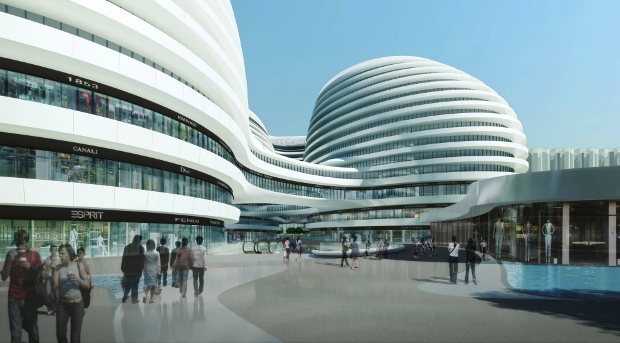
Galaxy Soho accused of damaging 'old Beijing'
Beijing Cultural Heritage Protection Center chastises RIBA for rewarding Zaha Hadid's 2012 creation
China's ceaseless growth sometimes sits at odds with its ancient heritage. Beijing's earliest civic foundations are said to date from the 11th century, yet returning visitors often remark on how quickly the city has changed, even since the 2008 Olympics.
While we might assume local people welcome each new statement skyscraper as warmly as the international architectural press greets them an open letter to The Royal Institute of British Architects (RIBA), suggests that some Beijingers would prefer to keep a little more of the old ways.
{media1}
The Beijing Cultural Heritage Protection Center (CHP) is a philanthropic body, dedicated to preserving local culture. It recently wrote to RIBA after the architectural body awarded Zaha Hadid Architects' Galaxy Soho complex a 2013 International Award for architectural excellence, chastising RIBA's choice of winner.
As readers may remember, Galaxy Soho is a white, sinuous 332,857m2 complex of offices, retail spaces and restaurants, which opened last autumn in central Beijing, and remains an impressive, strikingly modern work of architecture. On its opening, RIBA praised the structure for its “creation of public space at lower ground level with well-detailed seating and fountains,” which “demonstrates a rare generosity.”
Yet CHP says the very same building “caused great damage to the preservation of the old Beijing streetscape, the original urban plan, the traditional Hutong and courtyard houses, the landscape formation, and the style and colour scheme of Beijing’s unique vernacular architecture.”
{media2}
Beijing's old courtyards are fast disappearing across the city so while Galaxy Soho may have been built on the site of such streets it seems unduly critical to single out this complex alone. However, CHP goes on to allege that Galaxy Soho developers “violated a number of heritage preservation laws and regulations,” and that “during the land acquisition process, the legal rights of the original hutong residents were also grossly disregarded.”
The letter highlights the balance Chinese citizens confront daily, between the need to preserve old ways and embrace new opportunities. To read the letter in full, go here. To learn more about how architects are building across the world, consider The Phaidon Atlas of 21st Century World Architecture. And for a greater understanding of the tensions and forces within Chinese cutlure, please consider the forthcoming and available on pre-order Chinese Art Book.